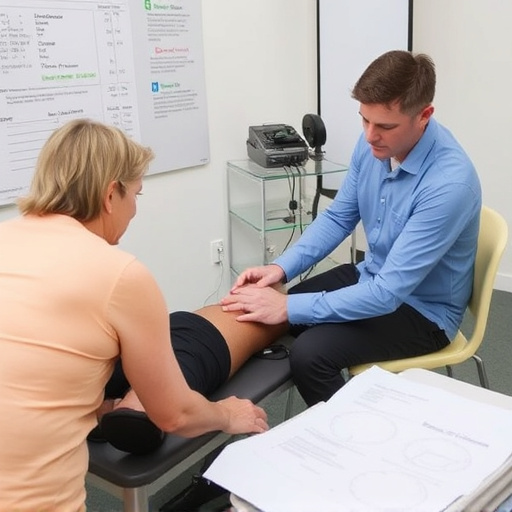A medical practice's online success requires a mobile-friendly website design and digital marketing strategies in the competitive Dallas market. This approach attracts and retains patients, strengthening the healthcare business's online presence. Essential features like easy navigation, quick loading times, appointment scheduling tools, and secure patient portals enhance patient engagement and satisfaction, with optimization for local search visibility through Google Business Profile and local citation services.
In today’s digital age, a medical practice’s online presence is crucial for patient engagement and growth. Designing a website that aligns with your practice’s goals requires understanding unique digital needs and crafting user-centric experiences. This article explores three key aspects of successful medical website design: understanding your practice’s digital requirements, creating intuitive mobile interfaces, and integrating vital medical features. By focusing on these elements, healthcare providers can ensure their websites are not just visually appealing but also highly functional and mobile-friendly.
- Understanding Your Practice's Digital Needs
- Crafting User-Centric Mobile Interfaces
- Integrating Essential Medical Features
Understanding Your Practice's Digital Needs

In today’s digital era, a medical practice’s online presence is no longer a nice-to-have but a necessity. Understanding your practice’s unique digital needs is the first step in creating a website that aligns with your goals. This involves considering how patients interact with your brand online, from initial searches to making appointments. A mobile-friendly website design is crucial for accessibility and convenience, as many patients now use their smartphones for healthcare queries and bookings.
Moreover, incorporating effective digital marketing strategies into your website’s design can significantly improve Google search rankings, increasing visibility in the competitive Dallas market. Professional web design that reflects your practice’s brand and values not only attracts but also retains patients. By understanding these interrelated factors, you can create a digital environment that fosters engagement, streamlines appointments, and strengthens your healthcare business’s online presence.
Crafting User-Centric Mobile Interfaces

In today’s digital age, crafting user-centric mobile interfaces is no longer an option but a necessity for medical practices aiming to enhance their online presence and engage patients effectively. A mobile-friendly website design ensures accessibility and usability across various devices, especially since many users now prefer accessing healthcare information and services via smartphones. By prioritizing mobile optimization, medical websites can boost local search visibility, making it easier for potential patients in Frisco or Arlington to find and connect with practices in their area through local SEO strategies.
User experience (UX) is key to achieving this goal. Responsive design techniques allow web pages to adapt seamlessly to different screen sizes and resolutions, providing a consistent experience regardless of whether users are on a desktop computer or a mobile device. This not only improves user satisfaction but also encourages longer sessions and higher engagement rates. Moreover, a well-designed mobile interface can simplify the process of scheduling appointments, accessing patient portals, and retrieving medical information, thereby fostering stronger relationships between healthcare providers and their patients in a highly competitive market.
Integrating Essential Medical Features

In creating a medical website that aligns with practice goals, integrating essential medical features is paramount. A mobile-friendly website design is no longer a luxury but a necessity. Patients today expect seamless access to healthcare information and services via their smartphones, and a well-optimized site caters to this demand. This includes easy navigation, quick loading times, and responsive layouts that adapt to various screen sizes. By prioritizing these aspects, medical practices can enhance patient engagement and satisfaction.
Additionally, incorporating key features like appointment scheduling tools, patient portals for secure communication, and resources for common health conditions demonstrates a commitment to providing modern, convenient care. Leveraging Google Business Profile optimization and local citation services further bolsters online visibility, making it easier for prospective patients in Dallas to find and connect with the practice. Efficiently integrating these elements ensures that the website not only meets but exceeds patient expectations, contributing to the overall success of the medical practice.
A well-designed medical website that aligns with your practice goals is not just a digital necessity, but also a powerful tool for enhancing patient engagement and care. By understanding your target audience, creating user-centric mobile interfaces, and integrating vital medical features, you can ensure your site is both informative and accessible. In today’s digital era, a mobile-friendly website design is essential to stay competitive and provide a seamless experience for patients seeking quality healthcare information and services.














